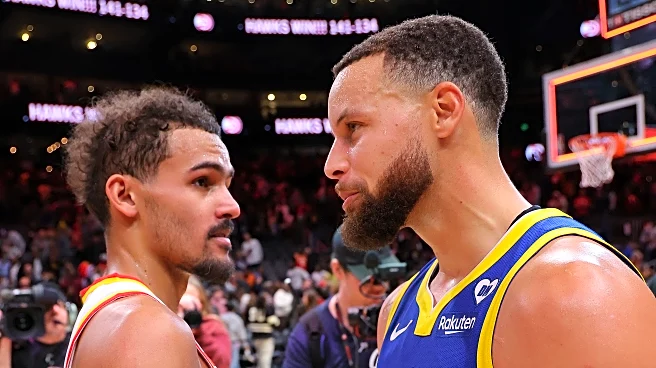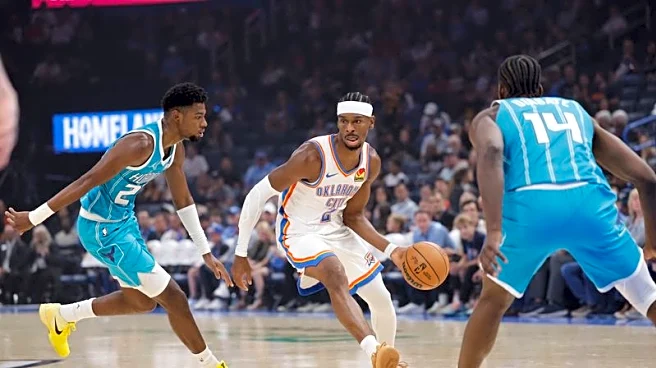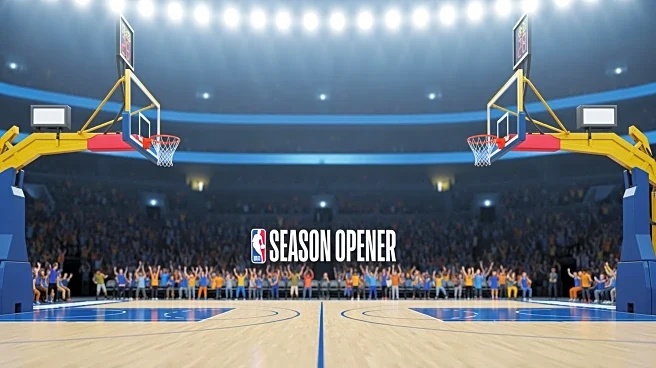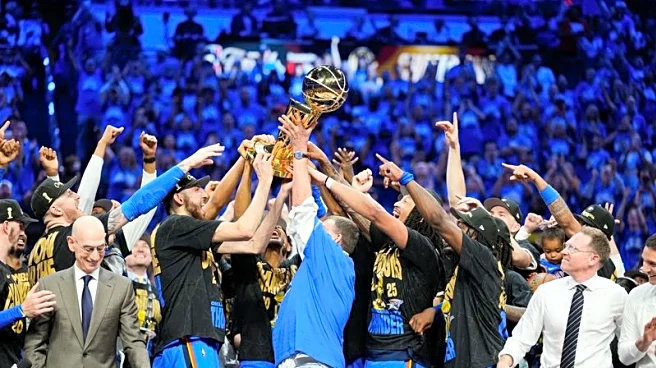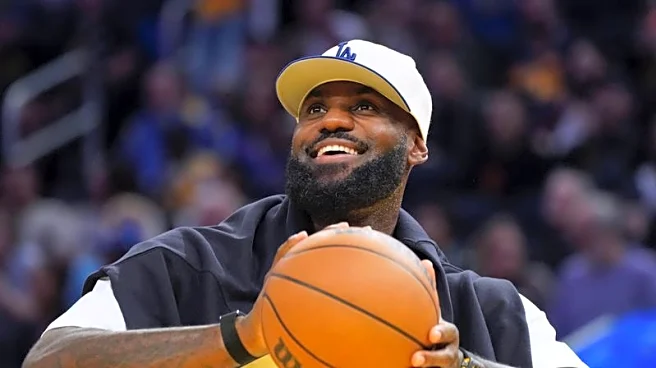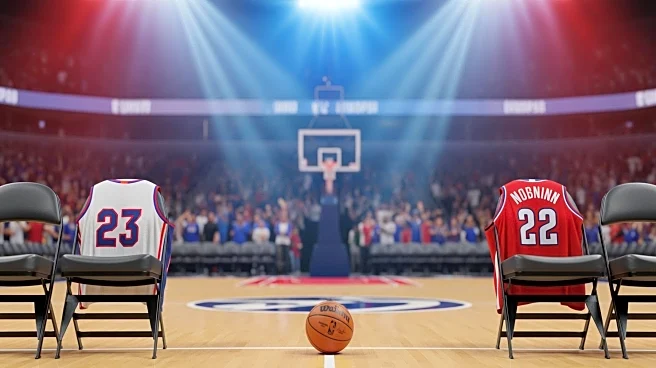What's Happening?
LeBron James, a prominent figure in the NBA, is missing the season opener for the first time in 23 years due to sciatica on his right side. The Los Angeles Lakers are set to play against the Golden State
Warriors without James, who has been a staple in Opening Night lineups since his debut with the Cleveland Cavaliers in 2003. This absence marks a significant moment in NBA history, as James was poised to become the first player to participate in a 23rd season. His career has seen him transition from the Cavaliers to the Miami Heat, back to the Cavaliers, and finally to the Lakers, with numerous memorable season openers along the way.
Why It's Important?
LeBron James' absence from the season opener is significant for both the Lakers and the NBA. As a key player, his presence often influences game dynamics and team morale. The Lakers will need to adjust their strategy without him, potentially affecting their performance against the Warriors. For the NBA, James' absence highlights the impact of player health on the league's operations and fan engagement. His career longevity and influence have been pivotal in shaping the league's popularity and competitive landscape. This development may also prompt discussions on player health management and career sustainability in professional sports.
What's Next?
The Lakers will need to strategize for upcoming games without LeBron James, focusing on leveraging other key players like Luka Dončić, who is making his first season-opener appearance with the team. The team's performance in James' absence will be closely watched by fans and analysts, potentially influencing future game strategies and player rotations. Additionally, James' recovery and return timeline will be a topic of interest, as his health is crucial for the Lakers' success in the season. The NBA may also see shifts in viewership and fan engagement, depending on how teams adapt to such high-profile absences.
Beyond the Headlines
LeBron James' absence from the season opener could have broader implications for the NBA's marketing and branding strategies. As one of the league's most recognizable figures, his participation often drives media coverage and fan interest. The league may need to explore alternative ways to maintain engagement and excitement around the season's start. Additionally, this situation underscores the importance of player health and wellness programs, potentially influencing future policies and practices within the league to better support athletes' long-term careers.


